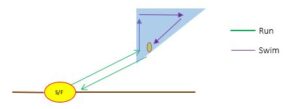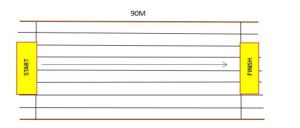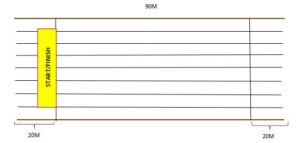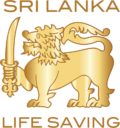LIFE SAVING SPORT
Introduction
Lifesaving sport helps develop the lifesavers’ skills, knowledge and techniques, and plays an important role in providing opportunities to enhance global relationships among ILS Member organizations. Lifesaving sport is recognized by the International Olympic Committee (IOC), Commonwealth Games Federation (CGF) and the International Military Sports Council (CISM). Lifesaving sport engages youth and adults from all nations in the mutual pursuit of excellence in lifesaving. The global focus on cooperation and teamwork to reduce the burden of drowning is a compelling opportunity. Increasing the participation of youth in lifesaving sport is part of the engagement strategy.
Goals and Objectives
According to the 2020 Drowning report, in the years 2016, 2017 and 2018, there were 38 foreigner deaths due to drowning. Hence, there is a dire need to promote water safety in Sri Lanka. In order for this, the development of local Lifeguards are crucial. Therefore,
- Lifeguards should be of athletic nature according to internationally acclaimed standards.
- Water could be a hazardous environment for anyone and thus for the safety of local citizens and foreign tourists, the presence of a Lifeguard is vital.
Therefore, including Lifesaving sport into this event will play an imperative function in the task of water safety in the country.
Beach Events
The Gold medallion event will feature an 800m run, 400m swim, 800m run and end with a 400m board paddle. Deliberately jostling or obstructing another competitor so as to impede his or her progress is not permitted. Judges shall be placed to observe the conduct of the event as well as determine competitors’ place at the finish line.

- 800m run
- 400m swim
- 800m run
- 400m board paddling
Competitors race 800m on the beach. The course design shall maintain the total distance and be set based on the venue’s features. On the starting signal, competitors race along the left side of the lane to round clockwise or right hand in or as otherwise advised by the Referee.
Deliberately jostling or obstructing another competitor so as to impede his or her progress is not permitted. Judges shall be placed to observe the conduct of the event as well as determine competitors’ place at the finish line.
The finish is judged on the competitor’s chest crossing the finish line. Competitors must finish on their feet in an upright position.
A surfboard is a craft propelled primarily by a competitor’s hands and arms. Refer to the ILS Facility and Equipment Standards Section for details. Competitors stand on or behind the start line on the beach with their boards 1.5 m apart.
At the start signal, competitors enter the water, launch their boards, and paddle the course marked by buoys, return to the beach, and run to cross the finish line.

Competitors are not permitted to hold or otherwise interfere with other competitors’ boards or deliberately impede their progress.
From the start line, competitors run to pass around the turning flag and enter the water to swim out to and around the buoys. Competitors swim back to the beach to again run round the turning flag before running to the finish line.
Note: Competitors may touch buoys and buoy ropes but are not permitted to use buoy ropes to drag themselves along the course.
Distance of run and swim length to be determined by chief referee and chief judge based on environmental situation

- Run from start point
- Swim to buoy (Must swim on towards the left of the flag)
- Swim back to shore – Following instructions
- Run to finish point
Competitors take their positions in their allotted lanes. At the starting signal, competitors race the 90 m course to the finish line. The finish is judged on the competitor’s chest (only) crossing the finish line. Competitors must finish the event on their feet in an upright position.
Running track to be outlined with 6 – 8 lines – depending on the number of participants.

Teams of four individuals compete in baton relay fashion over a 90 m course. To start, two competitors take positions in their allotted lane at each end of the course.
After the start each competitor completes a leg of the course with a baton held in either hand and passes the baton at the conclusion of the first, second, and third legs to the next runner. All competitors shall finish their leg of the event on their feet and in an upright position.
Competitors are not permitted to interfere with the progress of other competitors.
Same running track to be used as event 5 (90m Beach sprint) with a baton changing zone (20M) outlined.
Baton Changeovers
The baton shall be exchanged in the following manner:
(a) The competitor coming in to exchange the baton must carry the baton to the front line. (The baton may not be thrown to the next competitor.)
(b) Competitors receiving the baton on the first, second, and third exchange can be moving while taking the baton, but will be disqualified if any part of the body or hands cross the front line before taking possession of the baton.
(c) If a baton is dropped during the exchange, the receiver may recover the baton (ensuring that there is no interference to other competitors) and continue the race.
(d) If a baton is dropped at any other stage, the competitor may recover the baton (providing that there is no interference to other competitors) and continue the race.

Competitors cover a 1.2 km (approx.) course that includes an 800m board paddling and a 400m swim.

- 400m board paddling
- 400m board paddling back
- 200m swim
- 200m swim back to finish
The Board Relay event shall be conducted under the general rules of the Board Race event. Teams shall consist of four competitors, who may use the same craft.
A board change zone will be outlined and competitors will only be permitted to exchange boards within that zone.

Competitors lie face down with their toes on the start line with heels or any part of the feet together, hands on top of each other with fingertips to wrists and with the head up and stay 1.5 m apart from each other.
At the start signal, competitors rise, turn and race approximately 20 m to obtain a baton (beach flag). Since there are always fewer batons than competitors, those who fail to obtain a baton are eliminated.

Pool Events
With a dive entry on an acoustic signal, the competitor swims the 200 m course passing eight times under the immersed obstacles to touch the finish wall of the pool. Competitors must surface after the dive entry before the first obstacle; after passing under each obstacle; and after a turn prior to passing under an obstacle
Competitors may push off the pool bottom when surfacing from under each of the obstacles. “Surfacing” means the competitor’s head breaks the plane of the surface of the water. Swimming into or otherwise bumping an obstacle is not a behavior that results in disqualification.

With a dive entry on an acoustic signal, the competitor swims the 100 m course passing four times under the immersed obstacles to touch the finish wall of the pool. Competitors must surface after the dive entry before the first obstacle; after passing under each obstacle; and after a turn prior to passing under an obstacle
Competitors may push off the pool bottom when surfacing from under each of the obstacles. “Surfacing” means the competitor’s head breaks the plane of the surface of the water. Swimming into or otherwise bumping an obstacle is not a behavior that results in disqualification.

With a dive start on an acoustic signal, the competitor swims 25 m freestyle and then dives to recover a submerged manikin to the surface within 5 m of the pickup line. The competitor then carries the manikin to touch the finish wall of the pool. Competitors may push off the pool bottom when surfacing with the manikin.

With a dive start on an acoustic signal, the competitor swims 50 m freestyle to turn, dive, and swim underwater to a submerged manikin located at 17.5 m from the turn wall. The competitor surfaces the manikin within the 5 m pick-up line, and then carries it the remaining distance to touch the finish wall. Competitors may breathe during the turn, but not after their feet leave the turn wall until they surface with the manikin. Competitors may push off the bottom when surfacing with the manikin.

With a dive start on acoustic signal, the competitor swims 50 m freestyle wearing fins and Rescue Tube touching the turning edge, the competitor fixes the rescue tube around a manikin floating at the surface at the edge and tows it to the finish.

With a dive start on acoustic signal, the competitor swims 50 m freestyle wearing fins and then recovers a submerged manikin to the surface within 10 m of the turn wall. The competitor carries the manikin to touch the finish wall of the pool. Competitors need not touch the turn wall of the pool. Competitors may push off the bottom when surfacing with the manikin.

With a dive start on acoustic signal, the competitor swims 75 m freestyle. Then recovers a submerged manikin to the surface within 5 m. After touching the wall, and within the 5 m pick-up zone, the competitor fixes the rescue tube correctly around a manikin and tows 50 M. After touching the wall the competitor releases the manikin and rescue tube on the pool deck and swim 100 m freestyle. The event is complete when the competitor touches the finish wall of the pool.

With a dive start on an acoustic signal, the competitor swims 50 m freestyle wearing t shirt. After touching the wall the competitor remove his t shirt and recovers conscious patient. Then tow patient 50 M to the finish line. The event is complete when the competitor (rescuer) touches the finish wall of the pool.

In this timed event, the competitor throws an un weighted line to a fellow team member located in the water on the near side of a rigid crossbar located 12 m distant. The competitor pulls this victim back to the finish wall of the pool.

Four competitors in turn carry a manikin approximately 25 m each.
The first competitor – starts in the water holding a manikin with one hand (its mouth or nose above the surface) and the start wall or starting block with the other hand. On an acoustic signal, the competitor carries the manikin and passes it to the second competitor within the 4 m changeover zone situated between the 23 m and 27 m mark.
The second competitor – carries the manikin to touch the turn wall and passes the manikin to the third competitor who is in contact with the turn wall or starting block with at least one hand. The third competitor may touch the manikin only after the second competitor has touched the turn wall.
The third competitor – carries the manikin and passes it to the fourth competitor in the changeover zone between the 73 m and 77 m mark.
The Forth competitor – carries the manikin up to the finish line

Four competitors in turn carry a manikin with FINS approximately 25 m each.
The first competitor with fins– starts in the water holding a manikin one hand (its mouth or nose above the surface) and the start wall or starting block with the other hand. On an acoustic signal, the competitor carries the manikin and passes it to the second competitor in the 4 m changeover zone situated between the 23 m and 27 m mark.
The second competitor with fins – carries the manikin to touch the turn wall and passes the manikin to the third competitor who is in contact with the turn wall or starting block with at least one hand. The third competitor may touch the manikin only after the second competitor has touched the turn wall.
The third competitor with fins – carries the manikin and passes it to the fourth competitor in the changeover zone between the 73 m and 77 m mark.
The Forth competitor with fins – carries the manikin up to the finish line

With a dive entry on an acoustic signal, the first competitor swims 50 m freestyle passing under two obstacles. After the first competitor touches the turn wall the second, third, and fourth competitors repeat the procedure in turn. Competitors must surface after the dive entry before the first obstacle and after passing under each obstacle. “Surfacing” means the competitor’s head breaks the plane of the surface of the water. Competitors may push off the pool bottom when surfacing from under the obstacles. Swimming into or otherwise bumping an obstacle is not a behavior that results in disqualification. The first, second and third competitors must leave the water upon finishing their legs of the relay without obstructing any other competitors. The first, second and third competitors may not re-enter the water.

With a dive start on an acoustic signal, the first competitor swims 50 m freestyle without fins.
With a dive start after the first competitor touches the wall, the second competitor swims 50 m freestyle with fins.
With a dive start after the second competitor touches the wall, the third competitor swims 50 m freestyle towing a rescue tube. The third competitor touches the turn wall.
The fourth competitor, in the water wearing fins with at least one hand on the turn wall, dons the harness. The third competitor, playing the role of “victim”, holds the rescue tube with both hands while being towed 50 m by the fourth competitor to the finish.

Three competitors starts with 50 M Free style from the water. The one competitor touches the turn wall and all three competitors recover the victim (Forth Competitor). Victim should be in contact with first three competitors shoulders before passing the 5 m line. First three competitors swim 50m Brest Stroke with the victim to the finish line. (victim head must above the water)

